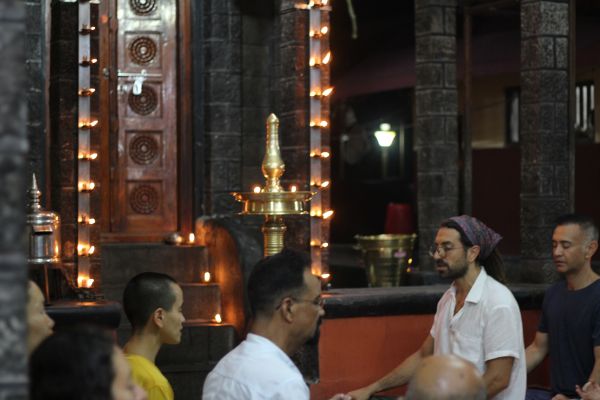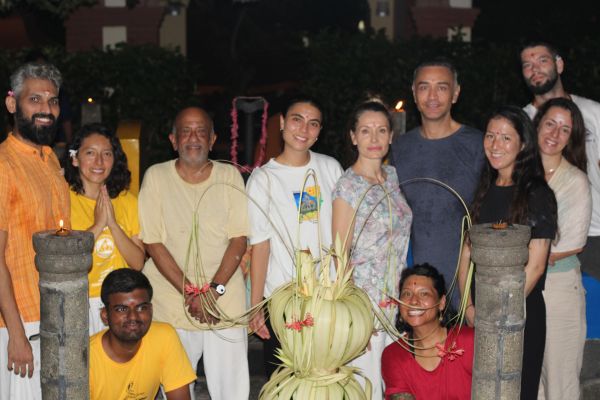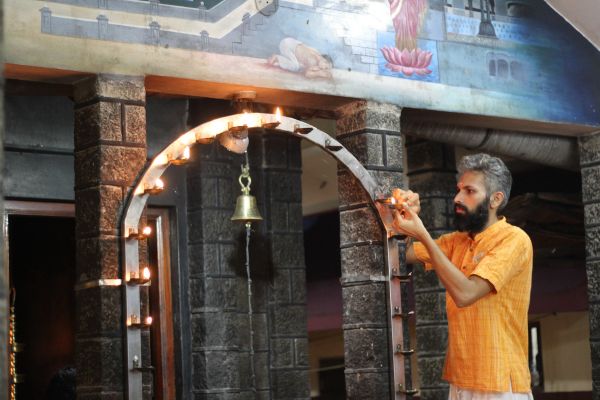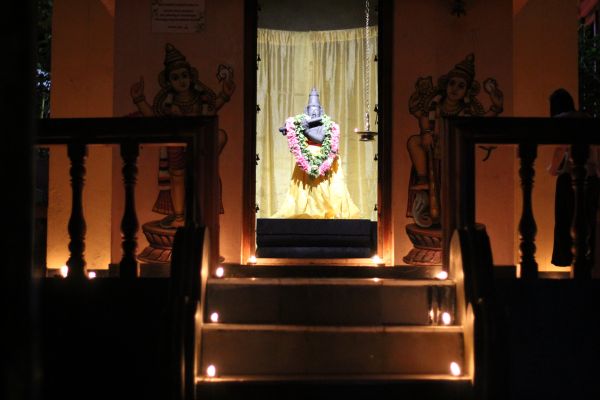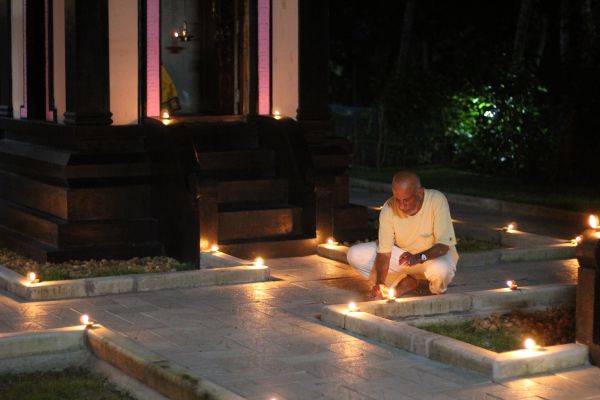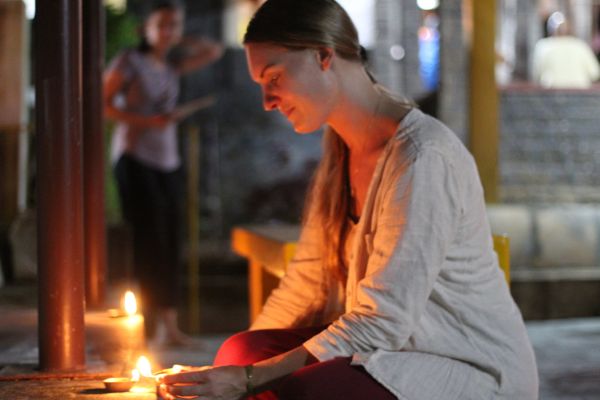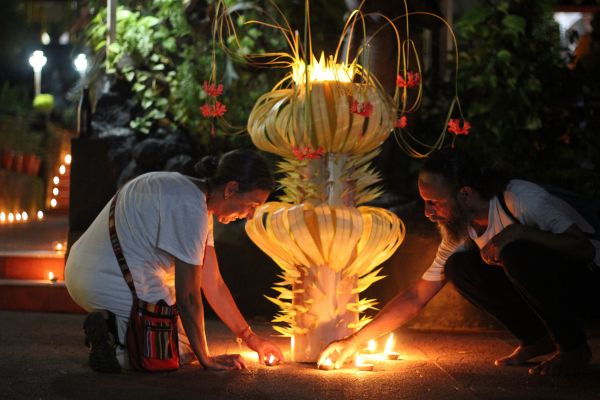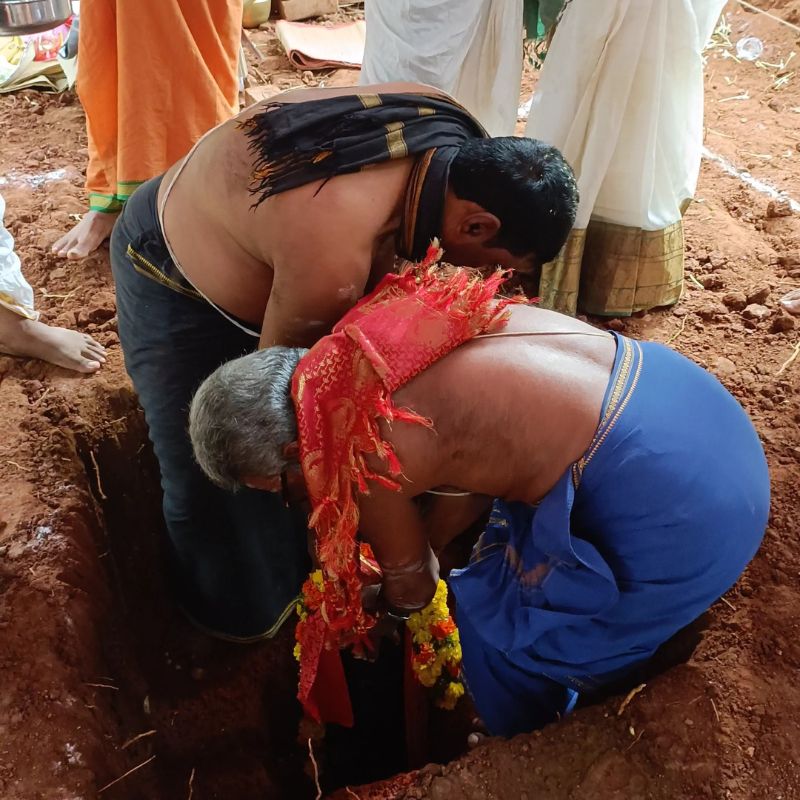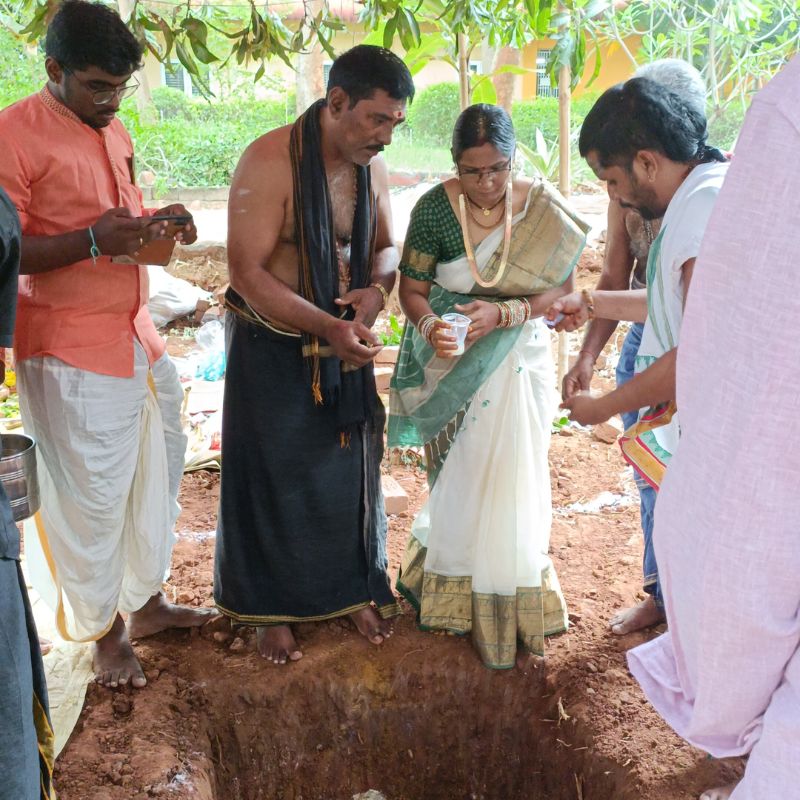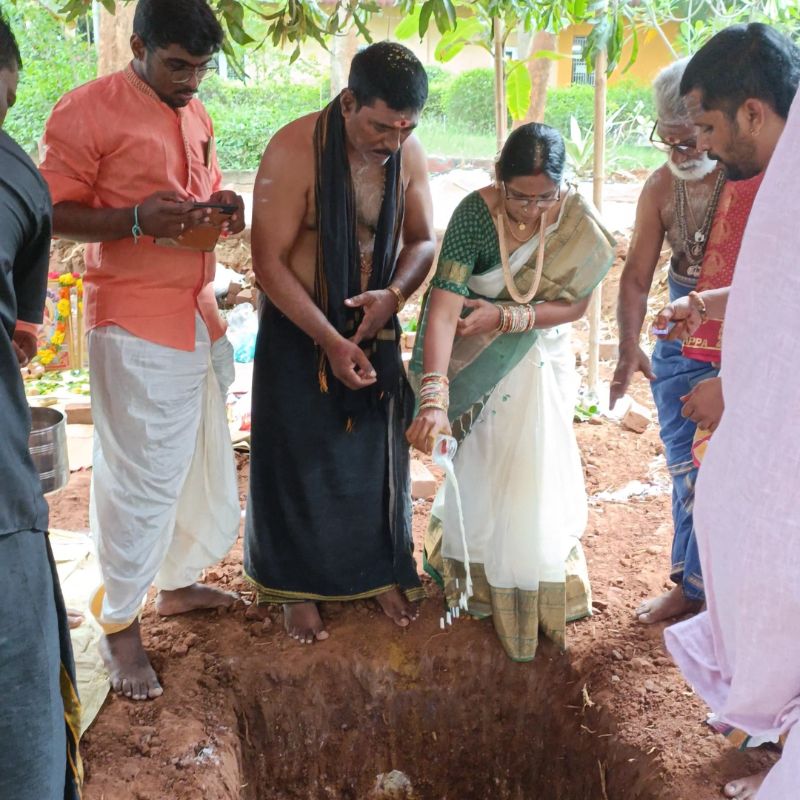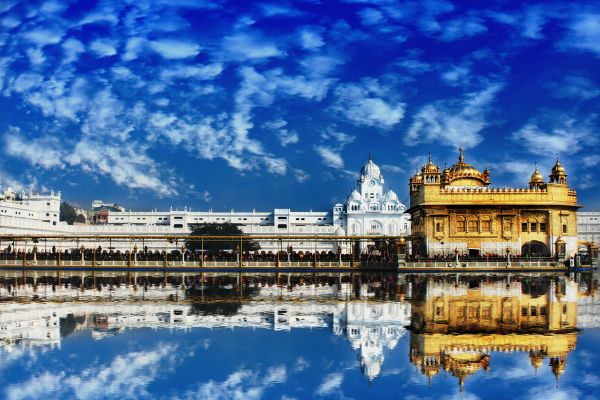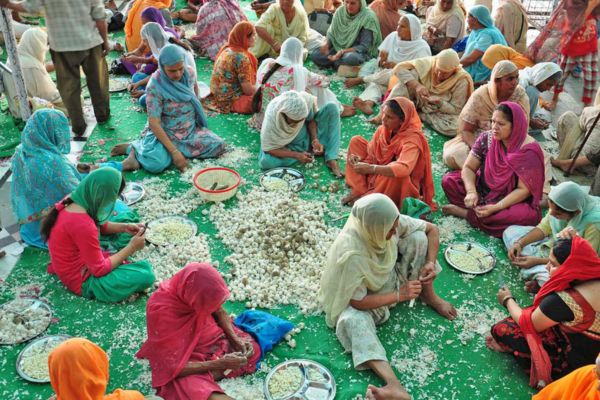
Om Namah Sivaya
Blessed Self,
As we reach the end of 2023, we fondly remember Swami Vishnudevananda’s peace missions around the globe, and their slogan, “Unity in Diversity”. The very part of the world which is now facing conflict reignited, was visited many times by Swamiji during his lifetime. Swamiji prayed to the leaders to come together and to end the conflicts so that innocent people might live in harmony and peace. He reminded everyone of the Vedantic teaching, “love thy neighbour as thyself”, which urges us to “see the same self everywhere” and to develop understanding rather than seeing differences, and developing hatred and jealousy.
Through his years of intense practice of yoga, meditation, and teaching that led him to establish the True World Order, Swamiji was fearless in expressing his views on conflicts and he risked his life many times. He strongly believed that the leaders’ attention must be brought to peace rather than power and politics. Swamiji taught us to follow the saying ‘United we live and Divided we Perish’.
We would like to encourage the Sivananda community to focus their attention and pray together to stop the ongoing wars and to live in harmony. Sivananda India is working to hold prayers and pujas in their locations and to follow Swamiji’s footsteps in advocating for peace. Please join us in our upcoming events online so that our prayers and thoughts may bring some kind of relief to those who are suffering. We sincerely hope that the new year brings an end to these ongoing conflicts and that we can live in peace and harmony.
Let us all embrace the teachings of yoga and meditation so that we can better know who we are, understand the world around us, and do our best to bring understanding between individuals. Irrespective of nationality, race and culture, our essential nature is that we are human and we need to love and understand each other, possible only through daily contemplation and meditation.
May Master and Swamiji’s blessings be with you all.
Pranams,
Sivananda Yoga Vedanta Ashrams & Centres, India
The fifth yama (or value) described by Patanjali in the Yoga Sutra is Aparigraha, or not being greedy; non-attachment, non-possession, non-accumulation, a form of self-restraint. A freedom from greed or attachment, as it is thought that we tend towards greed. We often feel that the more we possess, the more safe and secure we will be. The word greed often pops up in the teachings as part of a longer stream of words and even in Swami Sivananda’s Universal Prayer: egoism, lust, anger, greed, hatred, and jealousy. However, it is difficult to find a longer investigation of greed, attachment, grasping to things. As individuals we should constantly reflect on how greed may be present in our life. A recent study concluded that we require only 149 pieces of clothing throughout our lifetime. How many of us have so much more than that!
Aparigraha also means non-acceptance of bribes. In other words: don’t be bought. Receiving from others can create a feeling of debt and attachment, as if we have sacrificed our soul to material life. Likewise, cultivating an attitude of detachment to objects creates simplicity, innocence, and a feeling of self-reliance in life. Our interactions with others remain free of manipulation and bribery.
Practicing aparigraha ultimately reveals our purpose in life, why we were born. Certainly there is more to life than accumulating more and more possessions both material and non-material, such as beliefs, ideas, social roles.
Thank you for taking the time to read Yoga Sandesha. We hope you enjoy the newsletter and find some things to reflect upon. As usual, please feel free to reach out to us with your thoughts and feedback: [email protected]
Photo Update: Karthika Deepam at Neyyar Dam Ashram
On November 26 Karthika Deepam, or Lord Subramanya’s birthday was celebrated in the temple area. Ashram residents were invited to light earthen oil lamps, which felt particularly special under a magical full moon.
News Update: Temple Inauguration at Gudur Ashram
A foundation stone was laid for the construction of a Swamy Ayyappa Temple, just outside the ashram temple with construction set to commence in December. The auspicious ceremony started with a traditional homa seeking God’s blessings for the completion of this temple and was followed by abhishekam with milk, coconuts and flowers. Many residents from the neighbouring village participated in the ceremony and shared in a feast afterwards.
Research/Links
Why Non-Attachment May Be Key to Your Success. Read more here:
https://www.psychologytoday.com/intl/blog/striving-thriving/202203/why-non-attachment-may-be-key-your-success
Spiritual Calendar
December 8 – Ekadasi
December 12 – New Moon
December 23 – Ekadasi
December 25 – Christmas
December 26 – Full Moon
December 31 – Swamiji’s Birthday
Upcoming Courses:
Learn, Practise & Grow with Us!
Teachers’ Training Course (TTC)
- December 17, 2023 to January 13, 2024,
Gudur, Andhra Pradesh - January 7 to February 3, 2024,
Neyyar Dam, Kerala (English, with translation in Hindi, Malayalam, and Tamil) - Jan 14 to Feb 10, 2024,
Madurai, Tamil Nadu - Feb 11 to Mar 9, 2024,
Gudur, Andhra Pradesh
For more details, click here
Mindful Sadhana & Self-Development (ONLINE)
- Module 1: Physical,
Dec 18 – 23, 2023 - Module 2: Energetic,
Jan 15 – 20, 2024 - Module 3: Subtle,
Feb 12 – 17, 2024
For more details, click here
Sadhana Intensive Course (SI)
- January 21 to February 3, 2024,
Gudur, Andhra Pradesh
For more details, click here
Advanced Teachers’ Training Course (ATTC)
- February 11 to March 9, 2024,
Neyyar Dam, Kerala
For more details, click here
Teachings Excerpt:
Meditation and Mantras, by Swami Vishnudevananda
It is wise not to acquire possessions, for they often have strings attached, and tend to make the owner dependent. A person who has possessions is a prisoner of those objects and must expend energy and time caring for them. The man who owns and desires nothing is absolutely free. Possessions satisfy the body, encouraging identification with it, and tend to muddy the mind.
YS 2, v. 39 Aparigraha-sthairye janma-kathanta-sambodhah
When non acquisitiveness is established, an understanding of the purpose of birth is gained.
When the yogi no longer desires to have possessions, he frees himself from the material world. This gives him a perspective of the purpose of his birth, both in this life and in past ones. He gains comprehension of the law of Karma and understands what lessons remain to be learned before attaining Realisation.
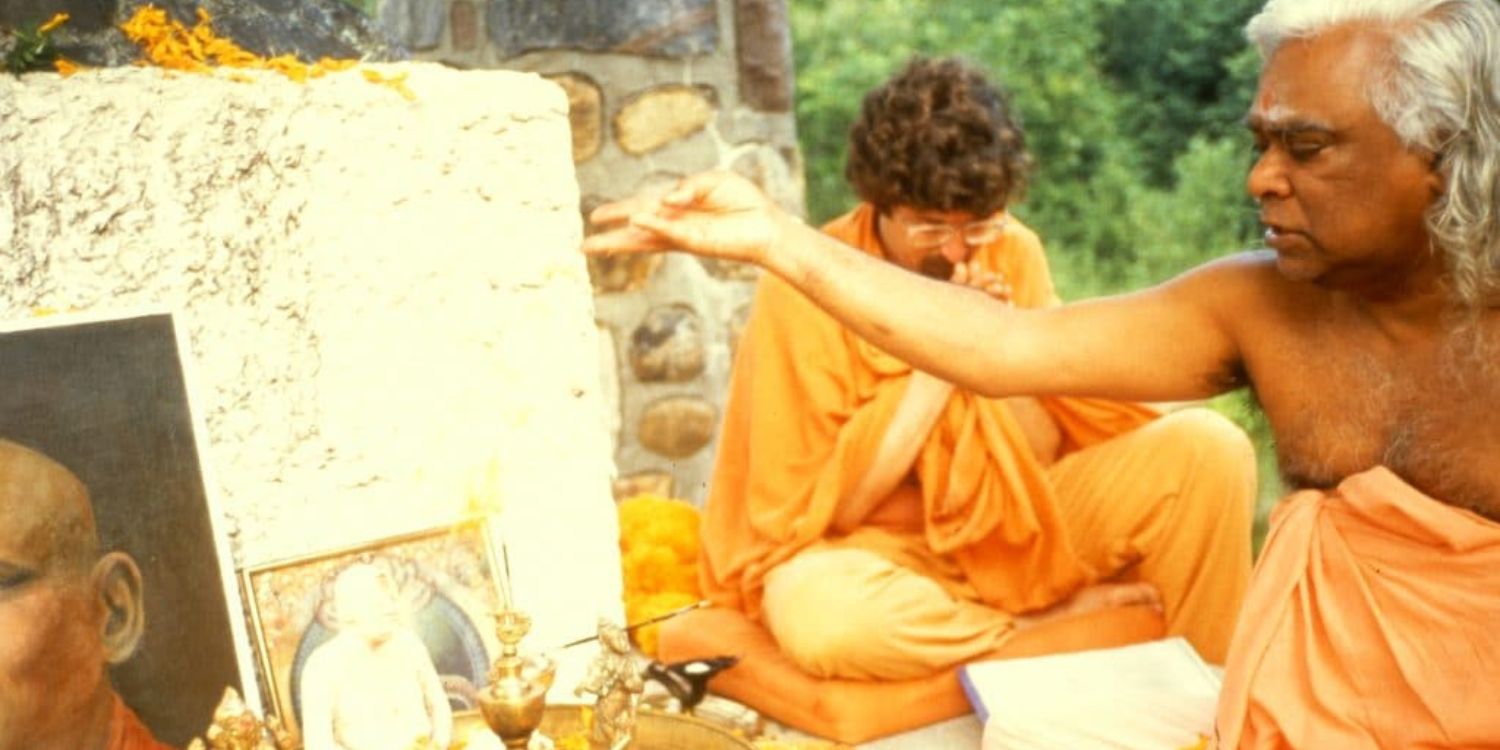
Teachings Excerpt:
Wisdom, Give Up Attachment, by Swami Sivananda
Attachment is the first child of Maya. This whole Lila of the Lord is kept up by the force of attachment. There is in the mind gummy substance which is like a mixture of castor oil, glue, gum-arabic, mucilage of tragacanth, gluten paste, honey, glycerine, jack fruit’s juice and all other pasty substances of the world. The mind is glued, as it were, to the objects with this mixture. Therefore the attachment is very strong.
Selfishness causes attachment. Attachment is the root-cause for all the miseries and troubles of this world. Work incessantly without an identification. Then alone you can have real happiness. You will yourself feel that you are a different being. This is the master-key to open the realms of Brahmic Bliss.

Practice and Teaching Tips:
Non-Possessiveness & Mayurasana
How can we reflect on aparigraha in our own practice of yoga?
Grasping, greed, and possessiveness are things that we may be able to feel within the body and our physiological responses to things. As a small experiment, try holding your smartphone in your hands, sit still and quietly with your eyes closed, breathing slowly. Then notice what your hands and fingers want to do, how they want to respond to that object. We are used to repeatedly searching and our bodily responses may reflect that.
To investigate possessiveness in our asana practice we can ask some questions. Do we own our yoga practice? Can I possess it? Is it mine? Is it selfish? Is it only about me?
Let’s explore how to add a new dimension to the asana practice, to dedicate it to another!
Temple Showcase:
Golden Temple, Amritsar and Its Kitchens
Dazzling in the shimmer of pure gold, the Golden Temple shines through as a symbol of brotherhood and equality in the Sikh community. Gaining equal respect and faith from all religious communities, it is one of the most famous pilgrimage sites in India. Located in Amritsar in Punjab, the Golden Temple is ornated with layers of pure gold, and the pure vibes of the temple can be felt as you step in amidst the peaceful hymns sung at the Gurudwara or the Home of the Guru. Also known as Sri Harmandir Sahib, the Gurudwara exemplifies a strong feeling of community service and brotherhood by serving daily langar (free meals) to over 20,000-100,000 devotees from the community kitchen.
Contrary to the idea of idol worship in most religions, it’s not the idol but the Guru Granth Sahib – the holy scripture of Sikhism – which is worshipped at the Gurudwara. The prayers happen in the form of Shabad Kirtan or Word Chant. These are spiritual hymns and devotional music. After the completion of the Ardas (Sikh Prayer), the devotees are blessed with Karah Prasad (holy offering) made in the community kitchen. More than 50,000 people are fed daily for free from the Golden Temple kitchen. The temple is not just a site of religious pursuits but also a place to experience different communities coming together and collectively working towards serving the community.
Interestingly, the Golden Temple is built at a lower level symbolizing a sense of humility. The Gurudwara is open to everyone and symbolizes equality for all with its four entrances from all directions. The pond surrounding the gurudwara originally used to be a small lake amidst a jungle and a site for meditation for ancient sages including Guru Nanak Dev ji, the founder of Sikh religion. The city of Amritsar is believed to have expanded and grown from around this Sarovar (pool).
The construction of Golden Temple started in 1581 and the current site stands tall after numerous modifications to its structure. In 1830, the temple was ornated with 162 kg of pure gold layers. Another 500 kg of gold was layered on the temple between 1995-1999. As per legend, it is also believed that Sage Valmiki wrote Ramayana at this site and Amritsar was the site of Rama and Sita’s 14-year exile.
The main devotional site is a small part of the huge Golden Temple complex which is known as Harmandir Sahib or Darbar Sahib. The architecture of Golden Temple is a judicious blend of Hindu and Islamic architectural pieces. The temple premise houses the world’s largest kitchen serving langar thousands of devotees each day. The kitchen runs on donations made by devotees and help offered by the visitors in cleaning and cooking activities.
Nutrition Tips:
Importance of Fasting in Yoga and Ayurveda
Instinctively, all species on Earth except humans fast during specific occasions including bad health conditions or seasonal shifts. Animals naturally stop eating when they get sick and expose themselves to more fresh air, light, and much rest to recover back their health, energy, and vitality. Fasting inherently has been a part of ancient traditions for its ability to help restore energy and heal by depriving the body of food and activating the body’s internal healing mechanism. Methodical fasting considering the season, condition and the constitution of an individual helps strengthen and purify the body & mind.
On the path of Yoga and Ayurveda, fasting is often practised as a lifestyle to be incorporated during specific times of the year. Even intermittent fasting inherently a part of Ayurveda lifestyle, and practised daily, helps enhance the health quality of an individual while elevating spiritual pursuits. No wonder yogis have practised fasting for ages. Physiologically, fasting gets the body rid of perished cells and other toxins out of the body.
Importance of Fasting in Yoga Practice: Yoga and Ayurveda are the sister sciences and most of the lifestyle practices in Yoga are inherited from the understanding of life in Ayurveda. One of the phrases in Ayurveda mentions, langhanam paramam aushadham which means “Fasting is the supreme medicine”. Ayurveda recommends that our diet must vary according to the cycles of nature and there are times in nature which asks for a slowdown specifically during seasonal transitions or during a state of stress or health concerns. Those times according to Ayurveda are the times of fasting. Most Yoga practitioners fast specifically on Ekadashi, that falls twice a month on 11th day after new moon and full moon. On this day, Yogic fast to match the energetic qualities in nature based on the planetary conditions.
In Yoga, fasting supports the practice drastically by enhancing the purification capability of the body. Scientifically, it is a known fact that about 70% of our internal energy is consumed by the digestive processes. By giving our digestive system a break, we spare that 70% energy towards the body’s inner healing reserves, detoxification, and eliminating dead cells and toxins in the body, thereby freeing up our tissues for better strength, flexibility, and a better state of tissue health. However, the relevance of fasting in yoga transcends beyond the body to the balanced state of mind. Fasting teaches us self-control and to refrain from temptations while staying strong.

Here are Swami Sivananda’s words on fasting and Ekadasi:
Vaikunta Ekadashi falls in the month of Marga-seersha (December-January). This is observed with all solemnity in the temples of Lord Vishnu. Fasting is prescribed on all Ekadashis, that is, the 11th day of the lunar fortnight, twice a month.
In this Kali Yuga, even if just one Ekadashi is observed with dispassion, faith and devotion, and if the mind is wholly fixed on Hari, one is freed from the rounds of birth and death. There is no doubt about this. The scriptures give us their assurance on this point.
Devotees fast on this day, observe vigil the whole night and do Japa, Hari Kirtan and meditation. Some do not take even a drop of water. Those who are unable to fast completely can take some light fruit and milk.
No rice should be taken on Ekadashi days. This is very important. The sweat that fell down from the head of Brahma assumed the form of a demon and said to the Lord, “O Lord! now give me an abode to dwell.”
Brahma replied, “O demon! go and dwell in the rice particles eaten by men on Ekadashi day and become worms in their stomach.”
For this reason rice is prohibited on Ekadashi. If one observes the Ekadashi fast regularly, Lord Hari is propitiated. All sins are destroyed. The mind is purified. Devotion gradually develops. Love for God becomes intense. Orthodox people in South India observe complete fasting and vigil even on ordinary Ekadashi days. For the devotees of Lord Vishnu, every Ekadashi is a very sacred day.
Fasting controls passion. It checks the emotions. It controls the senses also. It is a great penance. It purifies the mind and the heart. It destroys a multitude of sins. Fasting controls the tongue in particular which is the deadliest enemy of man. Fasting overhauls the respiratory, circulatory, digestive and urinary systems. It destroys all the impurities of the body and all sorts of poisons. It eliminates uric acid deposits. Just as impure gold is rendered pure by melting it in the crucible again and again, so also this impure mind is rendered purer by repeated fasting.
Fasting is one of the ten canons of Yoga. However, avoid excessive fasting. It will produce weakness. Use your common sense. If you cannot fast for the full twenty-four hours, at least fast for 10-12 hours and then take some milk and fruit. Gradually increase your fast to 15 hours and then up to 24 hours. Fasting makes a man strong, both spiritually and mentally.
“Cultivate peace first in the garden of your heart by removing the weeds of lust, hatred, greed, selfishness, and jealousy. Then only you can manifest it externally. Then only, those who come in contact with you, will be benefited by your vibrations of peace and harmony.” -Swami Sivananda


